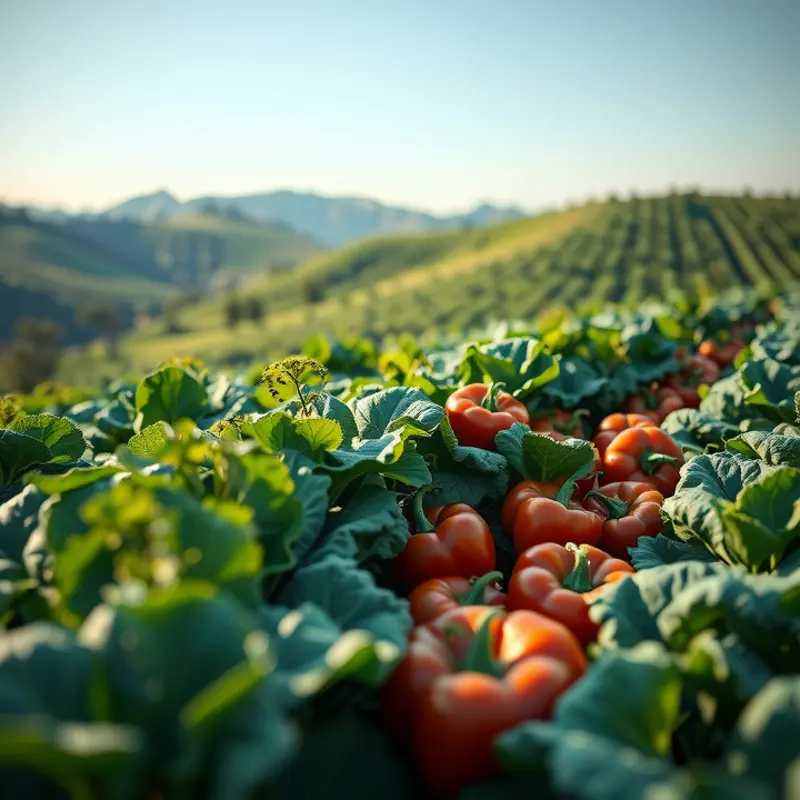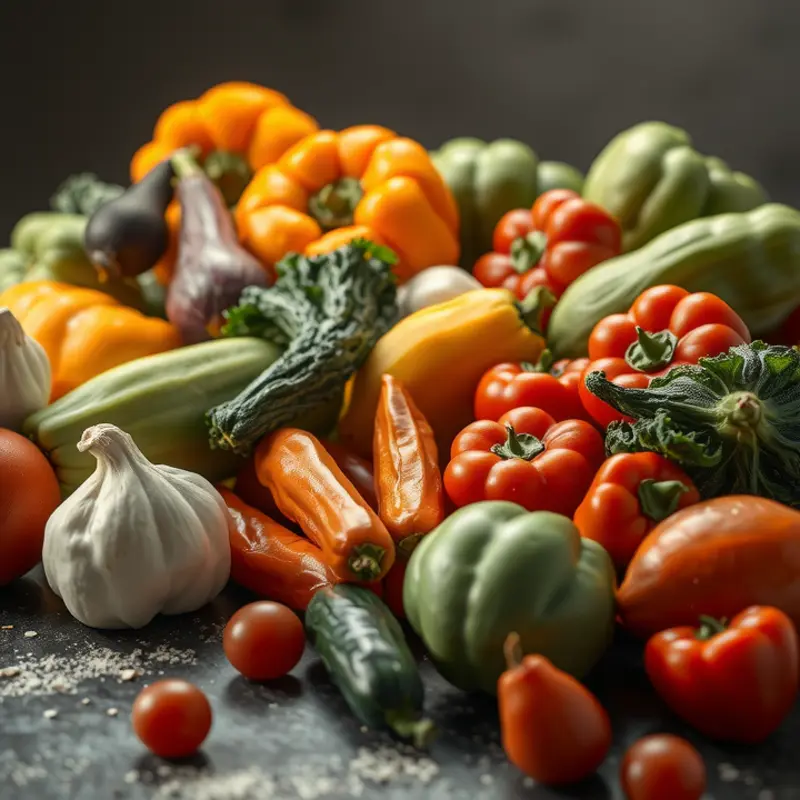Cooking crispy vegetables elevates any dish, adding texture and flavor. Whether you’re a novice or an experienced cook, mastering the art of achieving perfect crispiness is key. From choosing the right veggies to perfect cooking techniques, this guide will empower you to transform your cooking skills. Dive in to learn actionable tips that will impress your family and friends and make your meals even more delightful.
Selecting the Right Vegetables for Crispiness

Achieving the ideal crispy texture in your vegetables begins long before you fire up the stove. It starts with choosing the right type of vegetables that are naturally inclined to hold their firmness and crunch. Understanding which vegetables are best fit for this purpose is essential for anyone looking to master the art of crispy veggies.
Root vegetables like carrots, beets, and parsnips are renowned for retaining their crunch even after cooking. Their dense texture holds up well under heat, making them an excellent choice. Carrots, when sliced thinly or julienned, maintain a sweet crispiness, perfect for stir-frying or roasting. Beet chips are a delicious way to incorporate a vibrant crunch into your diet. For something heartier, parsnips offer a subtle sweetness and a satisfyingly firm bite when roasted.
Another category worth mentioning is cruciferous vegetables. Broccoli and Brussels sprouts, when cooked correctly, can offer a delightful crunch. For the best results, cut your broccoli into florets and roast them until the edges are golden and crispy. Brussels sprouts should be halved, allowing their inner layers to become tender while the outer leaves crispen up nicely in the pan.
Leafy greens might not be the first thing you think of for crispiness, but varieties like kale can surprise you. Kale chips are easy to prepare and offer a light, crispy alternative to traditional snacks. A quick bake in the oven with a bit of seasoning transforms these greens into crunchy delights.
Beyond selecting the right vegetables, preparation plays a crucial role. First, ensure that your vegetables are dried thoroughly after washing. Excess moisture can steam the vegetables instead of allowing them to crisp. Use a salad spinner or lay them out to air dry completely.
Size and uniformity in cutting also matter significantly. Slice your vegetables evenly so they cook at the same rate, avoiding overcooked or soggy results. For uniform thickness that promotes even cooking, investing time in precise chopping pays off tremendously.
To further enhance crispiness, consider coating your veggies lightly with cornstarch or rice flour before cooking. This additional step helps create an external layer that crisps up beautifully. For a deeper dive into substitution methods without compromising texture or flavor, check out this guide on cooking without gums.
Temperature control is another vital piece of the puzzle. High heat is your friend here, so don’t shy away from cranking up the oven or achieving a hot skillet. Pre-heat your pan or oven to ensure that vegetables hit the right temperature from the start, triggering caramelization and the coveted Maillard reaction that produces a beautiful crust. A well-heated cast iron skillet or a baking sheet ensures your vegetables pack a punch of crispiness with every bite.
In conclusion, masterful selection and preparation unlock the path to perfectly crispy vegetables. Select wisely, prepare diligently, and let each crunchy bite underscore your newfound expertise in achieving culinary perfection.
Cooking Techniques That Guarantee Crispiness

Achieving the perfect texture for your vegetables isn’t just about choosing the right produce. It’s also about how you cook them. Here, we delve into three tried-and-true cooking techniques: roasting, sautéing, and frying, which, when executed correctly, promise vegetables that are both crispy and flavorful.
Roasting is a favorite for many due to its simplicity and the depth of flavor it imparts. To roast vegetables to crispy perfection, preheat your oven to around 425°F (220°C). This high temperature is key; it encourages caramelization, bringing out natural sugars while also ensuring a crispy exterior. Spread your vegetables evenly on a baking sheet, ensuring they are not crowded, which could lead to steaming instead of roasting. A simple toss in olive oil, salt, and pepper is often enough, but enhancing flavor with herbs like rosemary or thyme can elevate your dish. Roasting times can vary based on the vegetable, but a good rule of thumb is 20-25 minutes, tossing halfway through.
If you’re looking for a quicker method, consider sautéing. This technique involves cooking vegetables in a hot pan with oil, giving you control over the cooking process. Start with a high-smoke-point oil, such as canola or avocado oil, and heat it in a pan over medium-high heat. Test the oil by adding a small piece of vegetable; it should sizzle instantly. Cut your vegetables uniformly to ensure even cooking and add them in batches if necessary to avoid overcrowding. Stir frequently to achieve an even browning, but avoid constant stirring which can hinder the crisping process. Season near the end to keep herbs and spices from burning, which ensures their flavors stay fresh.
Frying is another excellent technique to guarantee crispiness, though moderation should be considered for health reasons. When frying, control your oil temperature for consistent results, ideally maintaining it between 350°F and 375°F (175°C and 190°C). Use a thermometer to monitor this, as oil that’s too cool will result in soggy vegetables, while oil that’s too hot can scorch them. Coat your vegetables lightly in a batter or panko breadcrumbs to create a barrier that crisps beautifully. Fry in small batches to keep the temperature stable, and place them on a wire rack to drain excess oil, ensuring they remain crisp and dry.
Regardless of which technique you choose, the key elements remain the same: correct temperature, ample space, and appropriate seasoning. For more flavor tips that can be integrated with these methods, explore our guide on enhancing dishes while keeping salt minimal here. By mastering these cooking methods, you’ll ensure your vegetables are consistently crispy and delicious, ready to impress at any meal.
Final words
Achieving crispy vegetables is a skill that transforms your cooking and enhances meals. By focusing on selecting the right vegetables and mastering effective cooking techniques, you can make any dish more vibrant and enjoyable. Practice these methods to build your confidence in the kitchen and impress everyone at your table. Remember, crispiness is not just a texture; it’s a testament to the love and care you put into your cooking. Happy cooking!







